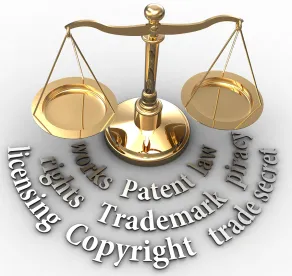Claim language is important. Particularly when dealing with software systems, claims may be held invalid as being indefinite when the claim language is characterized as “means-plus-function” under pre-AIA 35 U.S.C. §112 ¶ 6 (now AIA 35 U.S.C. §112(f)).
That is indeed what recently happened in Rain Computing, Inc. v. Samsung Electronics Co., Ltd., where the claims at issue were directed to “delivering software application packages to a client terminal in a network based on user demands” and recited sending a “user identification module” configured to perform various functions.
Under §112 ¶ 6, a “patentee may draft claims as a means or step for performing a specified function without the recital of structure, material, or acts in support thereof. But such claims are construed to cover only the structure, materials, or acts described in the specification as corresponding to the claimed function and equivalents thereof.” (internal quotations omitted).
To “determine whether §112 ¶ 6 applies to a claim limitation, [courts] inquire [into] whether the words of the claim are understood by persons of ordinary skill in the art to have a sufficiently definite meaning as the name for structure. If those words lack a sufficiently definite meaning, §112 ¶ 6 applies. If the limitation uses the word ‘means,’ there is a rebuttable presumption that §112 ¶ 6 applies.” (internal quotations omitted).
In Rain, the Court first determined that “user identification module” is a means-plus-function claim term. According to the Court, the word “module,” similar to the word “means,” did not provide any indication of structure, especially when both the claims and specification did not impart any associated structure and there was no commonly understood meaning of the term.
Second, since the Court found “user identification module” to be a means-plus-function term, it (1) identified the claimed function; and (2) determined what structure, if any, disclosed in the specification corresponded to the claimed function. In Rain, the Court held that the trial court erred in concluding that the disclosed computer-readable media or storage devices provided sufficient structure. Instead, the Court noted that the specification described nothing more than a general-purpose computer and failed to describe a specific algorithm that was required to perform the claimed function. As a result, the Court determined that the claims were invalid.
To help avoid potential pitfalls of means-plus-function claims, patentees should consider the following:
-
Adequately describe all claimed structure, including the specific algorithm, that corresponds to the claimed functions;
-
Avoid defining generic components solely by their functions;
-
Understand that replacing “for [performing a function] with “configured to [perform a function]” does not remove the means-plus-function presumption; and
-
Understand and be wary that claim a method does not prevent means-plus-function characterization.





 />i
/>i

